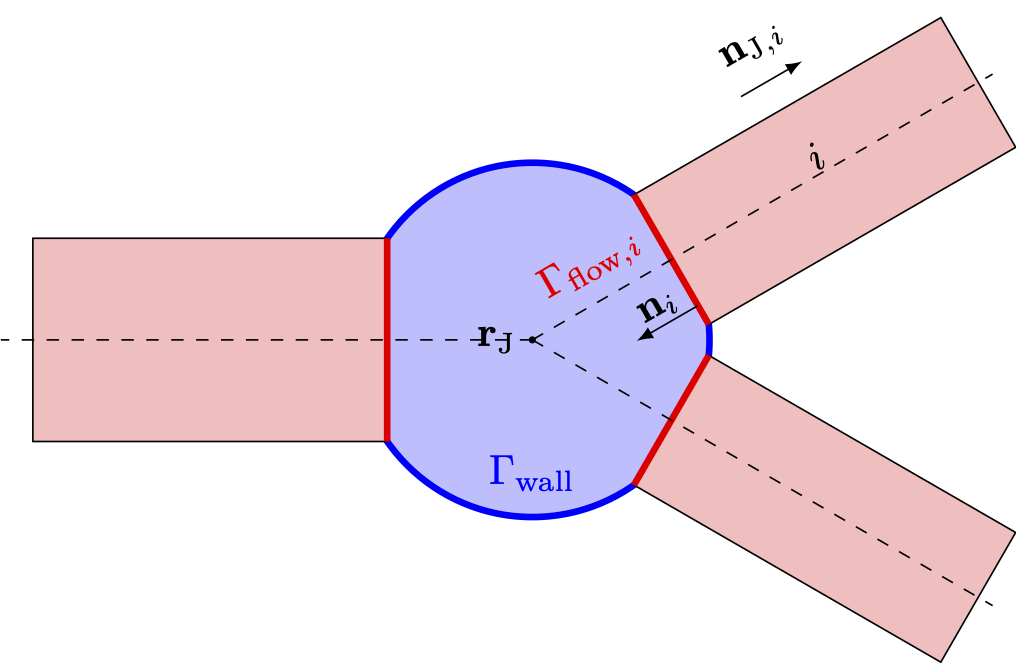Volume Junction
A general conservation law equation can be expressed as
where is the conserved quantity. Integrating this equation over a volume gives
The time derivative can be expressed as follows:
where is the average of over :
and .
The flux term can be expressed as follows:
where is the surface of , and is the outward normal vector at a position on the surface.
Now consider that is partitioned into a number of regions: , where . The surface corresponds to a wall, and the surface corresponds to a flow surface, across which a fluid may pass. The number of flow surfaces on the volume is denoted by . See Figure Figure 1 for an illustration.

Figure 1: Volume junction illustration.
Now the surface integral can be expressed as follows:
Now consider that the flux is constant over each flow surface, and that each flow surface is flat (thus making constant over the surface). Then,
where , and is the outward-facing (from the channel perspective) normal of channel at the interface with the junction.
Now the wall surface integral term needs to be discussed. At this point, we consider the particular conservation laws of interest. Starting with conservation of mass, where and :
owing to the wall boundary condition .
For conservation of momentum in the -direction, and :
Then, assuming the pressure to be constant along the surface, equal to the average pressure in the volume,
Using the Gauss divergence theorem,
Therefore,
Conservation of momentum in the and directions proceeds similarly.
Finally, conservation of energy has and :
again owing to wall boundary conditions.
Putting everything together and denoting the volume-average quantities with the subscript gives
The fluxes are computed using a numerical flux function,
where the vector is the outward unit vector from the "L" state to the "R" state, and and are arbitrary unit vectors forming an orthonormal basis with .
The "L" state is taken to be the junction, and the "R" state is taken to be the channel :
where is the local orientation vector for flow channel , equal or opposite to , and is the component of the channel velocity in the direction .
The input velocities here are in the global Cartesian basis , whereas the numerical flux function returns momentum components in the normal basis , so one must perform a change of basis afterward:
However, as shown by Hong and Kim (2011) and noted in Daude and Galon (2018), the choice of junction state given above leads to spurious pressure jumps at the junction, so the normal component of the velocity in the junction state is modified as follows:
with and and
with , where is sound speed.
References
- F. Daude and P. Galon.
A finite-volume approach for compressible single- and two-phase flows in flexible pipelines with fluid-structure interaction.
Journal of Computational Physics, 362:375–408, 2018.
URL: https://www.sciencedirect.com/science/article/pii/S0021999118301207, doi:https://doi.org/10.1016/j.jcp.2018.01.055.[BibTeX]
- Seok Hong and Chongam Kim.
A new finite volume method on junction coupling and boundary treatment for flow network system analyses.
International Journal for Numerical Methods in Fluids, 65:707 – 742, 02 2011.
doi:10.1002/fld.2212.[BibTeX]